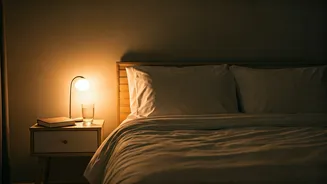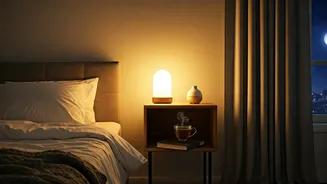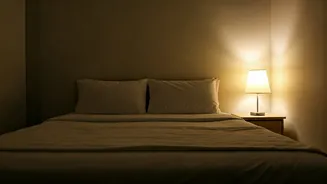Ancient Sleep Patterns
Before the ubiquitous presence of artificial light, human sleep was markedly different. For millennia, people embraced a biphasic sleep schedule, characterized
by two distinct periods of sleep throughout the night. This sleep pattern was common until artificial lighting altered our daily rhythms. People would typically go to sleep shortly after dusk, wake up for a few hours in the middle of the night, and then return to sleep until dawn. During the wakeful period, they engaged in various activities, from socializing and reflecting to completing light household tasks. This period was not regarded as a time to be unproductive, but rather as an opportunity for connection and contemplation. This biphasic sleep schedule was deeply intertwined with the natural environment and human circadian rhythms.
Biological Rationale
The rationale behind biphasic sleep is rooted in human biology and the natural processes that regulate our sleep-wake cycles. Our bodies are intrinsically attuned to the cycles of the sun, and the absence of artificial light meant our sleep patterns were closely aligned with the rise and fall of natural light. During the extended period of darkness, our bodies would produce more melatonin, a hormone that regulates sleep. The mid-sleep waking period may have also served as a natural break, allowing individuals to stretch, socialize, and complete tasks that did not require much light. The return to sleep would be driven by rising levels of sleep-inducing chemicals, ensuring a good night’s rest. This two-part system reflects a deep integration with our environment.
Social and Cultural Aspects
Biphasic sleep also had significant social and cultural dimensions, influencing how communities interacted and structured their lives. The wakeful period in the middle of the night became an opportunity for social bonding and communal activities. People might gather to talk, share stories, and reinforce their social ties. This period offered a unique setting for storytelling, reflection, and the sharing of knowledge, making it a critical component of their culture and identity. The practice of biphasic sleep not only influenced individuals but also molded community structures and ways of life. The communal nature of the wakeful period could have strengthened relationships and reinforced shared values, contributing to the fabric of human society. It was a time to deepen connections and reflect on the world.
Modern Sleep Disruption
The introduction of electricity and artificial light profoundly disrupted the natural cycle of biphasic sleep. Artificial lighting extended the hours people could work and be active, pushing bedtime later. The focus shifted from the natural rhythms of day and night to a more rigid schedule. As our relationship with light changed, sleep patterns were altered, making the two-part sleep cycle less practical. The rise of modern technologies has only accelerated this shift, contributing to sleep fragmentation and chronic sleep deprivation. Modern society emphasizes continuous sleep, leaving little room for the breaks that were once integral to our lives. As a result, many people have struggled to maintain optimal sleep health, impacting both physical and mental well-being.
Revisiting Sleep Schedules
Interest in biphasic sleep is resurfacing as people explore alternatives to the conventional eight-hour sleep routine. Some people are revisiting this ancient practice to discover its potential benefits. Proponents suggest it might improve sleep quality, enhance mood, and increase productivity. Research into sleep patterns continues, aiming to understand the full implications of this two-part sleep cycle. Although it can be challenging to implement biphasic sleep in a modern environment, some individuals find that it aligns better with their body’s natural rhythms. The exploration into alternative sleep schedules shows a renewed interest in understanding and optimizing human sleep. As we advance in sleep research, the wisdom of our ancestors offers important insights into how we rest and rejuvenate.













